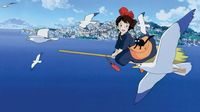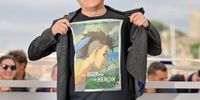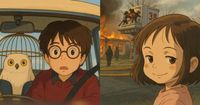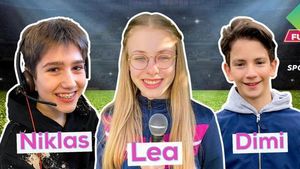In an unexpected twist of technological art, OpenAI has unleashed a new version of ChatGPT, which includes a fine-tuned image generator capable of creating images in the style of Studio Ghibli. This trend has quickly taken social media by storm, flooding platforms with AI-generated images that evoke the enchanting aesthetic of the beloved Japanese animation studio. The phenomenon has sparked both excitement and ethical debates surrounding the implications of using AI to mimic the work of iconic artists.
As of March 28, 2025, users on platforms like X (formerly Twitter) have been sharing their "Ghiblified" images, showcasing everything from family photos to pets, all transformed into the whimsical style characteristic of films like "Spirited Away" and "My Neighbor Totoro." The social media frenzy was ignited by Seattle-based software engineer Grant Slatton, who posted a photo of his family at the beach in Ghibli style, captioning it: "tremendous alpha right now in sending your wife photos of yall converted to studio ghibli anime." His post garnered over 42,000 likes and almost 27 million views, illustrating the trend's viral nature.
OpenAI's CEO, Sam Altman, humorously noted the overwhelming demand, stating that the company's servers were "melting" under the influx of requests. To manage the situation, OpenAI announced it would temporarily impose rate limits on image generations while working on efficiency improvements. In a bid to address artistic concerns, the company has also begun blocking requests for Ghibli-style content that mimic specific living artists, although it still allows for broader studio styles.
However, the trend has not been without its critics. Renowned filmmaker Hayao Miyazaki, co-founder of Studio Ghibli, has expressed his disdain for AI-generated art in the past. During a 2016 documentary interview, he reacted with visible revulsion to an AI animation demo, stating, "Whoever creates this stuff has no idea what pain is whatsoever. I am utterly disgusted. If you really want to make creepy stuff, you can go ahead and do it. I would never wish to incorporate this technology into my work at all. I strongly feel that this is an insult to life itself." His sentiments resonate strongly today as the Ghibli trend raises questions about the ethical implications of using AI to replicate an artist's style without consent.
Many artists and fans have voiced concerns that the surge of AI-generated Ghibli images may dilute the legacy of Miyazaki's painstakingly crafted works. Filmmaker Robbie Shilstone lamented, "Miyazaki spent his entire life building one of the most expansive and imaginative bodies of work, all so you could rip it off and use it as a filter for your vacation photos. I can't think of a worse artist to do it to as well." The meticulous detail and dedication that characterize Miyazaki's films are lost in the rapid production of AI-generated images, leading to a sense of disillusionment among those who appreciate the artistry behind traditional animation.
Despite these concerns, many users have embraced the Ghibli edit trend, sharing their creations as expressions of joy and creativity. Slatton noted that even those who typically oppose AI art have joined in, posting their own Ghiblified images. He described the positive responses he received, saying, "It's the single most net-positive day I've ever seen on Twitter. I got hundreds of DMs and replies telling me their spouse or kids or grandparents loved the pictures." This enthusiastic reception highlights a divide in public perception, with some viewing AI as a tool for enhancing creativity rather than a threat to artistic integrity.
As the debate continues, it remains crucial to navigate the intersection of technology and creativity with care. Critics argue that while AI can facilitate creativity, it must not overshadow the original works of artists like Miyazaki, whose unique visions deserve respect and protection. The challenge lies in finding a balance that allows for innovation while honoring the legacies of those who have dedicated their lives to their craft.
In light of the ongoing discussions, OpenAI's decision to restrict requests for specific living artists' styles may be a step in the right direction, but it raises further questions about the treatment of deceased artists and their intellectual property. The line between homage and appropriation can be thin, and as technology evolves, so too must our understanding of artistry and ownership in the digital age.
As the Ghibli trend unfolds, it invites both excitement and caution. While the joy of seeing familiar faces and scenes transformed into enchanting animations can be delightful, it is essential to consider the implications of AI art on the broader artistic community. As fans and creators alike engage with this new medium, the hope is that they will do so with a sense of responsibility and respect for the artistry that inspired it.







